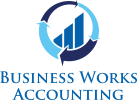Now that the holidays are over, we all have New Year resolutions to make more money and get back into shape. This is the time to seriously look at your business and consider where it’s going financially. Unless your business is snow removal or snow tires, chances are you have some extra time to run a few quick numbers and plan for any cash shortfalls in your business. Remember, the only reason businesses close is because they run out of cash.
Planning doesn’t have to be fancy but it does have to be effective. Don’t spend endless days on it, but make sure it’s accurate (you’re only cheating yourself if you don’t).
The key thing to remember during this process is that cash flow is different from an income statement. An income statement shows how much revenue you made and how much your expenses were. A cash flow forecast takes into account the timing differences between when you make sales and receive money from customers, versus when you must pay your suppliers and pay operating expenses.
Step #1: An easy way to start is to look at last year’s monthly financial statements, which will show you the seasonality of your business (in other words, the ups and downs in revenue throughout the year). To help forecast incoming cash, have a conversation with your marketing and sales teams; they will be able to guide you through what to expect for sales and any headwinds you might experience (you want to be realistic). If you make a sale in March and the customer has 30 days to pay, don’t expect to see this money until April. It is important to manage your sales and collections to make sure cash consistently flows into your business.
Step #2: Next, input the money that will be flowing out of your business. Chances are most of your operational expenses are the same each month (e.g. lease/rent, salaries, utilities). Be sure to input when you will pay the bill, not when you receive it (remember this is different from an income statement). Don’t forget to also take into account all payments on debt, dividends, or any one-off expenditures like equipment or vehicles.
Step #3: Finally, some simple math. For each month, the bank balance + inflowing cash – outflowing cash = what your cash position will be at the end of the month. At the end of every month, you should compare what your cash flow actually was as compared to the forecast and continue to improve your forecast. If cash flow is getting tight, do a weekly or daily forecast to better watch your pennies.
You now have a forecast of what your cash flow will look like for the year. Here comes the hard part: how are you going to manage shortfalls and surpluses to maximize your business? If you feel like you’re getting in over your head with this exercise, call an Accountant to help crunch the numbers. Even if an Accountant prepares your cash flow forecast for you, it is crucial that you understand it and review it regularly so you can properly plan; otherwise you are simply relying on luck to carry you through.

